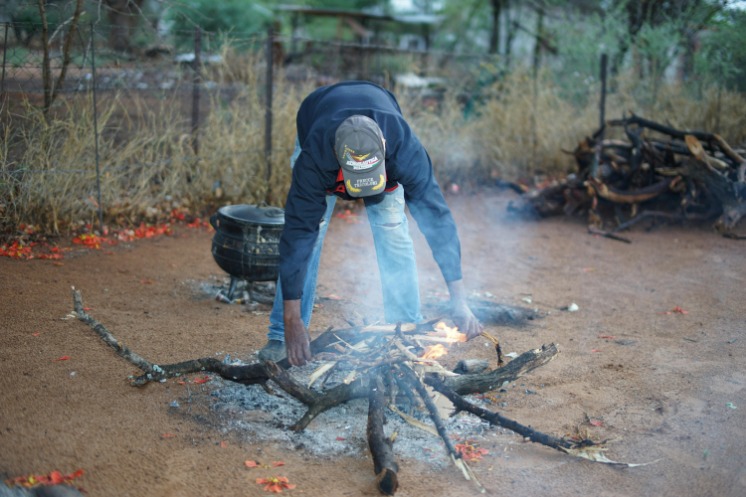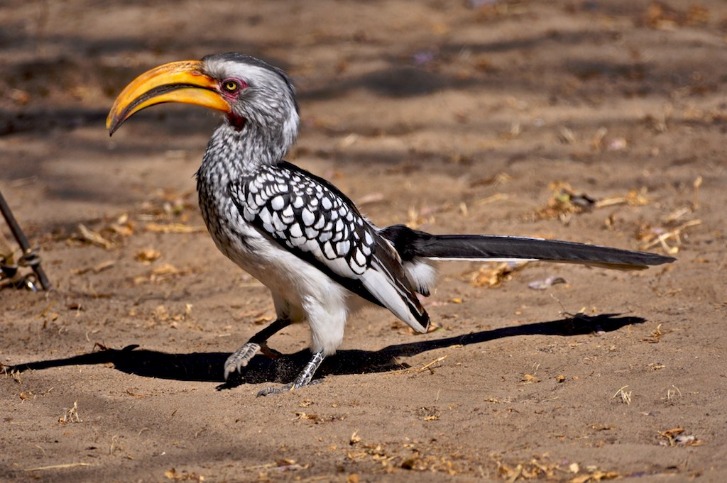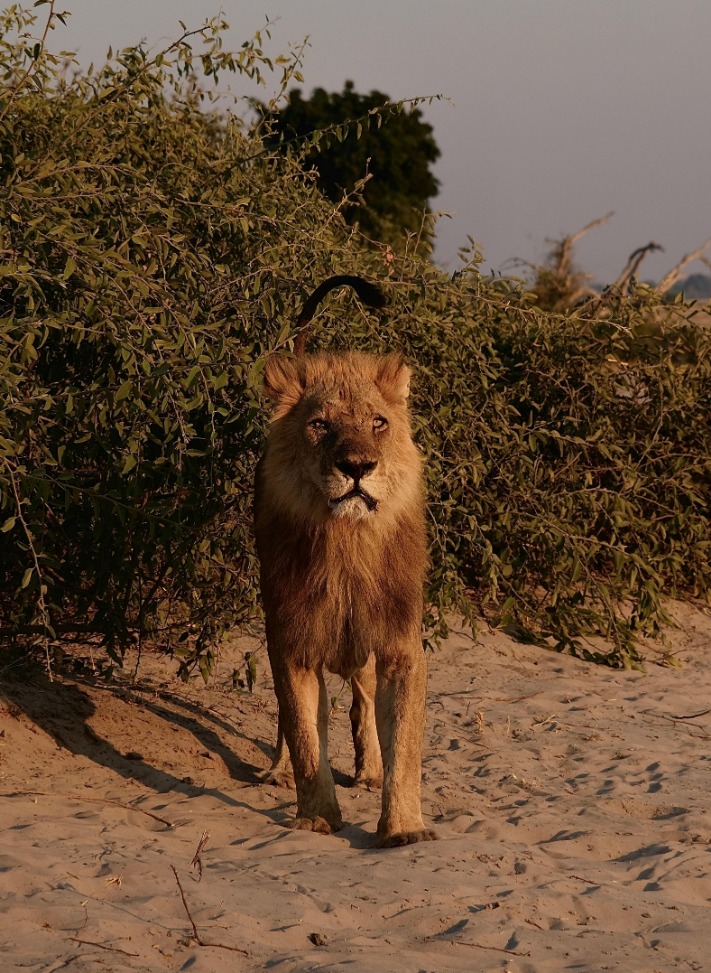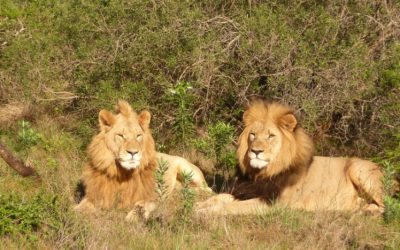Geographical Overview of the Botswana Desert
The Botswana Desert, commonly referred to as the Kalahari Desert, is a vast semi-arid sandy region covering large parts of Botswana and surrounding countries. Characterized by its expansive dunes, dry plains, and sparse vegetation, the desert plays a crucial role in the country’s geographical landscape. Despite its arid conditions, the Kalahari supports a variety of unique flora and fauna, making it an important ecological zone. Its location offers a fascinating mix of desert and savannah environments, contributing to Botswana’s diverse natural scenery.
Location and Extent
The Botswana Desert, also known as the Kalahari Desert, is a significant geographical feature located in Southern Africa. It extends across several countries, including Botswana, Namibia, Angola, and Zimbabwe, covering a vast area characterized by semi-arid landscapes. The region is known for its unique ecosystem, diverse wildlife, and distinctive red sand dunes, making it an important area for both ecological and geological study.
- Location: The Botswana Desert primarily lies within the boundaries of Botswana, occupying the central and southern parts of the country. It extends into neighboring Namibia to the west and Zimbabwe to the northeast, forming part of the larger Kalahari basin.
- Extent: Covering approximately 900,000 square kilometers, the desert stretches from the edges of the Namibian coastal desert in the south to the more inland areas of Botswana and beyond. Its size and diverse terrain make it one of the largest semi-arid deserts in the world.
Physical Features and Landscape
The Botswana Desert, primarily encompassing the Kalahari Desert, is a vast semi-arid region situated in southern Africa. It stretches across much of Botswana, extending into Namibia and Zimbabwe, and is characterized by its unique blend of arid plains and scattered vegetation. The landscape is predominantly flat with gently rolling sand dunes, salt pans, and dry riverbeds that define its physical features.
The physical features of the Botswana Desert include expansive sandy plains dotted with seasonal and permanent waterholes, which support a variety of flora and fauna. The desert’s iconic red sand dunes, such as the Makgadikgadi Pan, are some of the largest salt flats and dry lake beds in the world. The terrain is marked by sparse vegetation, including acacia trees, grasses, and shrubs that have adapted to the harsh conditions. Elevated areas like the Tsodilo Hills rise above the surrounding landscape, adding diversity to the physical scene.
The landscape of Botswana’s desert is shaped by the region’s climatic and geological features. The area experiences low and unpredictable rainfall, leading to the formation of salt flats and dry lake basins. Despite its arid nature, the desert supports a rich ecosystem, including desert-adapted elephants, lions, and numerous bird species. These physical features and landscape elements create a striking and resilient environment that embodies the wilderness of Botswana’s desert region.
Climate and Weather Patterns
The Botswana Desert is part of the larger Kalahari Desert, covering much of southwestern Africa. It is characterized by expansive sandy plains, dunes, and sparse vegetation, creating a unique and arid landscape. The region is known for its rugged beauty and diverse wildlife, which has adapted to the harsh environment. The desert’s geographical features include numerous salt pans, dry riverbeds, and occasional rocky outcrops, making it a distinctive geographical area within Botswana.
The climate of the Botswana Desert is classified as semi-arid to arid, with high temperatures and low rainfall throughout the year. Summers can see temperatures soaring above 40°C (104°F), while winters tend to be cooler but still relatively warm during the day. Rainfall is scarce, averaging less than 250 millimeters annually, which contributes to the desert’s drought-prone conditions. The landscape’s dryness is further influenced by the prevailing southeasterly winds, which can lead to dust storms and significant temperature fluctuations between day and night.
Weather patterns in the Botswana Desert are largely influenced by seasonal shifts and atmospheric circulation. During the summer months from November to March, the region experiences periods of intense heat, sporadic thunderstorms, and occasional rainfall, mainly driven by the South Asian monsoon. Winters, from June to August, are generally dry and cooler with clear skies and low humidity. The combination of high temperatures during the day and cooler temperatures at night underscores the extreme temperature variability characteristic of desert climates, shaping the environment and the lifestyle of inhabitants and wildlife.
Major Deserts and Dune Fields in Botswana
Botswana’s landscape is marked by vast stretches of major deserts and expansive dune fields that define its rugged and arid environment. These deserts play a crucial role in shaping the country’s climate, ecosystem, and natural beauty. From the iconic Kalahari Desert to the shifting sand dunes, Botswana offers a unique desert terrain that attracts researchers, tourists, and nature enthusiasts alike.
The Kalahari Desert

Botswana is renowned for its expansive desert landscapes, including some of the major deserts and dune fields in the region. The Kalahari Desert, covering much of Botswana, is a vast semi-arid sandy area known for its unique ecosystem and indigenous wildlife. Unlike typical deserts, the Kalahari supports a variety of plant and animal species, making it a vital part of Botswana’s natural heritage. Major dune fields within the Kalahari, such as the Makgadikgadi Pan, are notable for their stunning salt flats and shifting sands. These areas attract researchers, tourists, and explorers eager to witness the incredible desert scenery and understand its ecological significance. Overall, Botswana’s deserts play a crucial role in shaping the country’s geography, biodiversity, and tourism industry.
Other Desert Areas and Dune Fields
Botswana is characterized by several major deserts and dune fields that define its arid landscape. The Kalahari Desert, one of the most prominent features, spans much of the country’s interiors and is renowned for its sandy dunes, sparse vegetation, and unique ecosystem. Other notable desert areas include the Makgadikgadi Pans, which are vast salt flats resulting from ancient lake beds that have dried up over millennia. These pans are among the largest salt flats in the world and serve as important habitats for migratory birds and wildlife.
Within Botswana, dune fields such as the Makgadikgadi Basin feature impressive sand dunes that attract tourists and adventure seekers. The dunes vary in size, with some reaching heights of over 20 meters, offering picturesque landscapes and challenging terrain for outdoor activities. Beyond Botswana, major desert regions include the Namib Desert to the southwest, known for its towering sand dunes and rich biodiversity, and the Sahara Desert in northern Africa, which is the largest hot desert in the world. These desert areas share common features of arid climate, extensive sand dune systems, and specialized flora and fauna adapted to harsh conditions.
Ecology and Biodiversity
Ecology and biodiversity are fundamental to understanding the complex web of life that exists in natural environments. In the context of the Botswana Desert, these concepts highlight the diverse range of plants, animals, and microorganisms that have adapted to survive in one of the world’s aridest regions. Exploring the interactions within this unique ecosystem reveals the resilience of life and the importance of conserving such fragile habitats.
Flora of the Botswana Desert
The Botswana Desert, part of the Kalahari Desert, is a unique ecosystem known for its rich biodiversity and diverse flora. Despite its arid climate, the region supports a variety of plant species that have adapted to survive in harsh conditions, such as limited water availability and extreme temperatures. These plants play a crucial role in maintaining ecological balance and providing shelter and sustenance for numerous animal species.
Some of the prominent flora found in the Botswana Desert include drought-resistant grasses, hardy shrubs, and succulent plants like aloes and cacti. Acacia trees are also common, providing shade and food for wildlife. These plant species have developed special adaptations, such as deep root systems and water-storing tissues, to thrive in an environment characterized by sparse rainfall and intense sunlight.
Ecologically, the flora of the Botswana Desert contributes significantly to the biodiversity of the region. They support various animal species, including mammals, birds, insects, and reptiles, which rely on the vegetation for nourishment and habitat. Conservation of this fragile flora is vital to preserving the overall biodiversity and ecological health of the desert ecosystem, ensuring sustainable coexistence between flora and fauna in this challenging environment.
Fauna Adaptations and Species
Botswana’s desert environments, particularly the Kalahari Desert, are home to a diverse range of flora and fauna uniquely adapted to survive harsh conditions. The ecosystem here is characterized by extreme temperatures, limited water sources, and sparse vegetation, which have led to the evolution of specialized adaptations among species. Biodiversity in this region is vital for maintaining ecological balance and supporting the livelihoods of local communities.
Many animals in the Botswana desert have developed remarkable adaptations to thrive in this challenging landscape. For example, the meerkat exhibits social behaviors and active burrows to regulate temperature and avoid predators. The desert-adapted elephants have longer legs to traverse sandy terrain and seek water sources over vast distances. Some reptiles, like theMonitor lizard, have the ability to store water and regulate their body temperature through behavioral adjustments.
Various plant species, such as drought-resistant shrubs and grasses, have evolved water-saving features like deep root systems and reduced leaf surface area. These adaptations enable them to survive prolonged dry periods and provide essential food and shelter to desert fauna. The resilience of these organisms underscores the delicate balance of life in Botswana’s desert ecosystems, highlighting the importance of conservation efforts to preserve this unique biodiversity.
Unique Ecosystems and Habitats
The Botswana Desert, primarily consisting of the Kalahari Desert, is a unique ecosystem that supports a rich diversity of flora and fauna despite its arid conditions. This environment showcases how life adapts to extreme dryness and limited water resources, creating a delicate balance within the ecosystem. The desert is home to several specialized species such as the meerkat, gemsbok, and various hardy plant species that thrive in the harsh climate.
Ecology and biodiversity in the Botswana Desert are vital for maintaining the health of this unique habitat. Many animals have developed survival strategies, including nocturnal activity and water conservation techniques. The desert’s biodiversity also includes numerous bird species, insects, and indigenous plants that are adapted to withstand high temperatures and scarce rainfall. These organisms form interconnected relationships, contributing to the resilience and stability of the desert ecosystem.
Unique ecosystems and habitats within the Botswana Desert include the seasonal salt pans, ancient riverbeds, and scattered acacia and thornbush vegetation. Each of these habitats plays a crucial role in supporting the diverse array of species. Conservation efforts are essential to preserve these fragile ecosystems, as they are increasingly threatened by climate change, human activities, and resource exploitation, which can lead to loss of biodiversity and habitat degradation.
Hydrology and Water Resources
Hydrology and Water Resources are vital fields that study the distribution, movement, and management of water within the Earth’s environment. In the context of the Botswana desert, these disciplines are crucial for understanding the challenges associated with water scarcity in arid regions. Effective management of water resources is essential for sustaining life, supporting agriculture, and ensuring the development of communities in such harsh landscapes.
Oases and Water Holes
The Botswana Desert, characterized by its arid landscape and scarce water sources, heavily relies on natural hydrological features such as oases and water holes to support both wildlife and human populations. These vital water sources are often found in depressions or along natural underground channels where groundwater emerges, providing essential hydration in an otherwise dry environment.
Oases in the Botswana Desert serve as crucial ecological centers, supporting diverse flora and fauna while also offering refuge for nomadic tribes and livestock. The presence of water in these areas influences local hydrology by creating microhabitats that sustain life and facilitate seed dispersal, thus maintaining ecological balance in the desert.
Water holes, often formed by erosion or natural aquifers, act as concentrated gathering spots for animals and humans alike. They play a significant role in the hydrological cycle within the desert, recharging groundwater levels and supporting vegetation growth nearby. Effective management and conservation of these water sources are vital for the sustainability of life in Botswana’s harsh desert climate.
Role of Groundwater
Hydrology and water resources are critical in managing the arid regions of Botswana, particularly in the desert areas where surface water is scarce. Groundwater plays a vital role in sustaining ecosystems, agriculture, and human settlements in these desert environments. It serves as the primary source of water for many communities, supporting domestic use and livestock. In Botswana’s desert regions, groundwater is often accessed through boreholes and wells, making it an essential resource for survival. Proper management and sustainable utilization of groundwater are crucial to ensure water security in this arid landscape, especially in light of climate variability and increasing demand. Protecting groundwater quality and recharge rates is vital to maintaining this resource for future generations, and it requires integrated water management strategies tailored to the unique conditions of Botswana’s desert ecosystems.
Impact of Climate Change on Water Availability
Hydrology and water resources are critical concerns for Botswana, a country characterized by vast desert regions and limited water availability. The impact of climate change has intensified these issues by altering precipitation patterns, increasing temperatures, and causing more frequent and severe droughts. These changes reduce the availability of fresh water from natural sources such as rivers and aquifers, making water scarcity a significant challenge for both urban and rural populations. In the Botswana desert, the unpredictable nature of rainfall and prolonged dry spells threaten agriculture, ecosystems, and human settlements. Effective management of water resources and adoption of sustainable practices are essential to mitigate the adverse effects of climate change on water availability in this arid region.
Cultural and Historical Significance
The Botswana Desert holds a profound cultural and historical significance, serving as a symbol of resilience and natural beauty for the communities that have thrived in its surroundings for centuries. Beyond its arid landscape, the desert is intertwined with the stories, traditions, and spiritual practices of the local people, reflecting their deep connection to the land. It also plays a crucial role in shaping the country’s history, from ancient survival strategies to modern conservation efforts that emphasize the importance of preserving this unique environment.
Indigenous Communities and Their Traditions

The Botswana Desert holds a rich cultural and historical significance, deeply intertwined with the indigenous communities that have inhabited the region for centuries. It is a land of legends, traditional practices, and ancestral stories that shape the identity of local tribes such as the San and Bakgalagadi. These communities maintain unique customs and rituals that are passed down through generations, reflecting their profound connection to the desert environment. Their traditions, from music and dance to storytelling and craftsmanship, offer insight into their resilience and harmonious relationship with the arid landscape.
- Indigenous communities like the San and Bakgalagadi have adapted to the desert’s harsh conditions, developing specialized survival strategies and sustainable practices.
- Traditional ceremonies often incorporate elements of the desert’s flora and fauna, emphasizing spiritual connections to the land.
- Art forms such as rock paintings and beadwork serve as cultural expressions and historical records of their interaction with the desert environment.
- Community elders play a vital role in preserving oral histories that detail the desert’s significance in their spiritual and social lives.
Historical Exploration and Expeditions
The Botswana Desert, particularly the Kalahari, holds rich cultural and historical significance for the indigenous peoples and explorers who have traversed it. The San people, also known as Bushmen, have inhabited the region for thousands of years, leaving behind a legacy of rock art and oral traditions that offer insights into their ancient way of life. These images and stories depict hunts, spiritual rituals, and daily activities, providing a window into the desert’s historical tapestry. Throughout history, explorers and adventurers have been drawn to the Kalahari’s vast expanse, seeking to understand its unique ecosystems and uncover its secrets. Notable expeditions contributed to geographical knowledge and highlighted the resilience of both the desert environment and those who sought to study it. The desert’s historical exploration has also underscored its role as a natural boundary and a symbol of endurance for the region’s inhabitants and explorers alike.
Legends and Mythology related to the Desert
The Botswana Desert, primarily represented by the Kalahari Desert, holds profound cultural and historical significance for the indigenous communities, especially the San people. This vast arid landscape is intertwined with their legends and mythology, often regarded as a sacred space where spirits and ancestors dwell. According to San folklore, the Kalahari is inhabited by mystical beings and serves as a place of spiritual power and origin, where creation stories are rooted. Many traditional stories describe the desert as a living entity that connects the physical world with the spiritual realm, emphasizing its importance in their cultural identity. Historically, the desert has also been a place of resilience and adaptation for the San, who have survived in these harsh conditions for thousands of years, shaping their legends of survival, resourcefulness, and harmony with nature. These stories and myths reflect the deep reverence the local communities have for the desert, viewing it not just as a barren expanse but as a vital part of their heritage and spiritual existence.
Tourism and Conservation
The vast and breathtaking deserts of Botswana offer a unique experience for travelers seeking nature’s untouched beauty. Balancing tourism with conservation is essential to protect these delicate ecosystems while allowing visitors to enjoy their splendor. Responsible tourism ensures that the desert’s stunning landscapes and diverse wildlife are preserved for future generations to explore and appreciate.
Popular Tourist Spots and Activities
Botswana’s deserts, including the Kalahari Desert, offer a unique blend of tourism and conservation efforts that protect its rich biodiversity while allowing visitors to experience its stunning landscapes. Conservation initiatives in the region aim to preserve endangered species such as the cheetah and African wild dog, ensuring sustainable tourism practices. Popular tourist spots include the Okavango Delta, a UNESCO World Heritage Site known for its lush wetlands and diverse wildlife, and the Moremi Game Reserve, which provides exceptional safari experiences. Activities in the desert region range from thrilling game drives and bird watching to cultural tours with indigenous communities, all conducted with a focus on preserving the natural environment and supporting local communities. This harmonious balance between tourism and conservation makes Botswana a remarkable destination for eco-conscious travelers seeking adventure and sustainability.
Conservation Efforts and Challenges
Tourism in the Botswana desert offers a unique experience for travelers seeking breathtaking landscapes and diverse wildlife. However, balancing tourism with conservation is essential to preserve the desert’s fragile ecosystem. Conservation efforts in Botswana focus on protecting its vital habitats, including the Okavango Delta and Kalahari Desert, which are home to rare species such as elephants, lions, and numerous bird species. Despite these efforts, challenges like illegal poaching, habitat degradation, and the impacts of climate change threaten the sustainability of these ecosystems. Ensuring responsible tourism and strengthening conservation initiatives are crucial to maintaining the natural beauty and ecological health of the Botswana desert for future generations.
Impact of Tourism on the Desert Environment
Tourism in the Botswana desert offers a unique opportunity for visitors to experience its stunning landscapes and rich biodiversity. However, increased tourism activity can have significant impacts on the fragile desert environment. The influx of tourists often leads to habitat disturbance, soil erosion, and pollution, which threaten local wildlife and plant species. Additionally, the construction of infrastructure such as roads, lodges, and other facilities can fragment natural habitats and disrupt ecosystems. To balance tourism development with conservation, it is essential to promote responsible tourism practices, enforce environmental regulations, and raise awareness among visitors about the importance of preserving Botswana’s desert environment. Sustainable tourism can help protect these ecosystems while ensuring that future generations can enjoy their beauty and biodiversity.





0 Comments